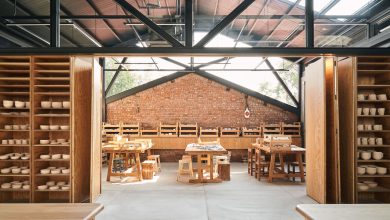Snowy Mountain Drawing shouldn’t be hard read these tips

Snowy Mountain Drawing
Today we are going to draw Snowy Mountain. They must have a mystical allure and there must emerge from the drawing an impression of grandeur in the rough. We can only remain contemplative in front of such a vision of nature.
THE GRAPHIC ELEMENTS OF A MOUNTAIN
These peaks are impassable for most men. This kind of landscape is found in a very particular climate where the atmospheric pressure is very low because it drops the higher the altitude is. It is thus very cold there and consequently, life struggles to develop there. You will not find trees or bushes on these mountains, but mostly rocky land, covered with a thick blanket of snow. We can also teach your kids about house drawing from our website
THE COLOR PALETTE OF OUR DRAWING
The color palette that I have come up with is unsurprisingly in cold tones. We are getting closer to blue, or purple. If you wish, you can also use a palette in shades of cyan blue (tending towards turquoise), as for the glaciers. Even if we draw Snowy Mountain, and more particularly their summits, we will avoid frankly green tones, synonymous with abundant vegetation. For the rocks, we will use the darker blues. Sky and clouds can be the same hues as ice, ranging from a slightly tinted white to a pale blue.
DRAW A MOUNTAIN LANDSCAPE STEP BY STEP
On a flat area representing the blue sky, I lightly texture the background of the image to suggest the atmosphere of the drawing and the emerging clouds. You can do a gradient with an extremely pale color to transition with blue to add relief. Here I took a soft pink.
Mountains form chain
Generally, mountains form chains: that is, they are one after the other. Their peak then seems continuous. For that, we’ll start by drawing a random guideline that will represent it. Have fun with the shapes; create peaks, troughs, curves. Postpear
Draw the line of the top
I draw the line of the top which is in the foreground, in fuchsia. Then a second line for the second plan, in purple. Finally, I draw the lines of my background in blue. On this background will be concentrated distant mountains, barely visible in the blur of the clouds Snowy Mountain. For this drawing, we will have to play with the atmosphere so that we feel the freezing cold, but also the bewitching beauty of the snow. Let’s move on to color.
Step 1 ADD COLOR TO THE DRAWING
Each zone is well defined, I apply a solid color to each of them by following the color palette chosen above. I take the most sustained and dark color for the foreground and a less saturated blue for my background. Finally, I use several pale blues for my background because I want to demonstrate the distance of these mountains: the further one gets from them, the more they must appear small and of desaturated color.
Step 2 Irregularities on the vertice
I create irregularities on the vertices and detail the aspect of the second plan which will be the most important place of the drawing. Here is the result when we remove the guidelines:
Step 3 Clouds between each mountain
I add clouds between each mountain range in the background, leaving them barely visible in the blur of the latter. This reinforces the atmosphere and inks the drawing in a humid and cold climate.
Step 4 Divide my mountain
Following the movement of the arrows, I divide my mountain in order to bring more relief to the different mountains which are concentrated in the foreground and the background. They will be very steep.
Step 5 Apply a gradient
I apply a gradient on each division according to my color palette. The further I go, the more the mountainsides become clearer. I take a saturated blue to give the highlight of this chain a little more life.
Step 6 Bottom of the peaks
Still roughly, I place the main areas of snow (with the lightest shade, without using white). They cluster at the bottom of the peaks, where their slopes soften and also seem to want to climb to the top of the peaks with a few branches of snow.
Step 7 Details of the branches and refine the edges
I draw the details of the branches and refine the edges of the snow already present. You can add little snow dots here and there, always in the direction of the slope.
Step 8 Shading the snow
To start shading the snow, I place a large blue gradient starting from the left of the drawing. Then, other smaller branches will come to rest on the first ones, going from the bottom to the top of the mountains, concentrating in the hollows
Step 9 ADD REALISM TO THE MOUNTAIN LANDSCAPE
The light comes from the left (see the orange arrow below), thus, we deduce the direction and the length of the shadows cast from the Snowy Mountain. The shadow that I accentuate the most is that of the main peak, on the lowest point. In order to give relief and more plausibility to my visual, the time has come to add texture and detail.
Step 10 Texture of the rock
I add the texture of the rock by insisting on the width of the lines in the foreground. They will be more subtle in the background. In fuchsia, I draw you some examples of textures Snowy Mountain. I start to texture the snow in places (only in the foreground). Here are some examples of brushes for that:
Step 11 Last details come to light
The last details come lights, definition. We can make the color of the sky slightly pink on the snow reverberate.
Step 12 Texture the snow a little more
I finish the Snowy Mountain Drawing by taking a step back and I make adjustments if necessary: I texture the snow a little more in the foreground in order to make a clear distinction between the 1st and the 2nd plan. Well done! The drawing of the snow-capped summit is finished!
Conclusion
If you want to simplify this tutorial, you can summarize each step in a succession of solids (which will look just as good because the scale of the drawing is very small compared to a real mountain). We can afford to lose details, keeping most of the shapes: snow against a rock, it is the contrast to be preserved.



